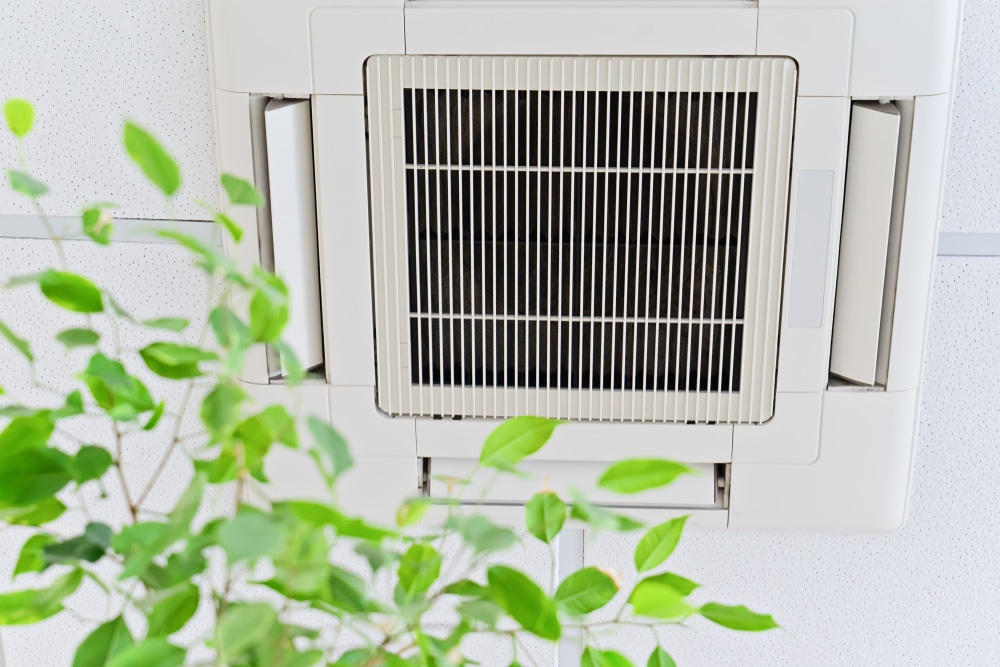Sensgreen: Is indoor air coronavirus ready?
 The UK Public health says that ‘..improving indoor air can be as good as vaccinating 50-60% of the population.’
The UK Public health says that ‘..improving indoor air can be as good as vaccinating 50-60% of the population.’
As the world confronts the challenges of the COVID-19 pandemic, transmission through air is likely to increase due to the shortfall in ‘Indoor Air Quality’. In an effort to control high morbidities and mortalities caused by the current pandemic, several researches and evidence based studies have been carried out, especially in respect to the indoor environment given we’ve all been forced to spend even more time indoors.
Sensgreen, based on its accumulated expertise in indoor air, has cross-evaluated the literature to shed light on the dilemma of transmission risks of the COVID-19.
Is Indoor Air Coronavirus ready?
The aggressive nature of the disease is directly connected with the transport phenomena of both droplets and aerosols, and the comprehension of such phenomena is vital in controlling the spread of the disease within such confined spaces.
Transmission routes identification is vital for better understanding and controlling its spread. The most common types of respiratory infection causing viruses, including COVID-19, has postulated three main modes in which the virus can be transmitted: aerosol transmission, droplet transmission, and selfinoculation of the nasal mucosa by contaminated hands. Another classification is often referred to as the term of ‘airborne transmission’ to describe the disease spread by small droplet aerosols and droplet nuclei, while the term ‘droplet transmission’ describes infection by large droplet aerosols.
A study by van Doremalen et al., 2020 has reported that SARS-CoV-2 can survive in the air for many hours, causing potential aerosolized transmission.
Aerosol-based transmission of COVID-19 has gained attention and has been recognised globally. Pivotal engineering control such as enhanced ventilation measures can be employed to control the spread of viruses. With improved ventilation and augmented air distribution solutions, the risk of cross-spread of infection from an infected person at a distance more than 1.5m can be minimized.
Coronavirus that ranges from 80-160 nanometer in size, can stay active in the indoor air of confined spaces for nearly 3 hours, and nearly 2-3 days on surfaces within a space. These virus particles are in fact not naked, they are enclosed within the expelled respiratory fluid droplets. These expelled respiratory droplets, which are inhalable, can be suspended in air, and the smaller droplets have the ability to travel in tandem with the airflows in the room, extract air ducts and in supply air ducts when there is recirculation of air.
Although no conclusions have been made on the modes of transmission of viruses via droplets, aerosols and contact, however, globally scientists strongly agree that uncontrolled & low indoor air quality can boost the immediate transmission risk significantly.
Many people are reported to contract the COVID-19 in confined spaces and there have been myriads of hypotheses corroborating that certain threshold levels of humidity, temperature, sunlight, and ventilation will speed up the virus-laden droplet and aerosol transmission, aggravating the spread of the SARS-CoV disease.
There are chances of aerosol transmission during activities such as talking to people at shorter proximity, and similar activities leading to spread of infection without coughing/sneezing . This was first addressed by Japanese authorities, followed by US CDC, UK Government, Italian Government and the China National Health Commission.
Currently, there is sufficient evidence conclusive of aerosol-transmission of the virus.
Studies from superspreading outbreaks have shown that a higher rate of secondary infection was associated with minimally ventilated spaces.
These identified routes can be encountered by maintaining physical distance to avoid close contact, provision of sufficient ventilation and hand hygiene to avoid surface contact contamination.
For long-range aerosol-based transmission of these virus particles, the social distancing norms often fall short.
These can often be countered via concentration control using appropriate ventilation. Moreover, the environmental factors play a major role in transmission payloads of SARS-CoV-2 virus across different geographical locations of outdoor and indoor environments. Other than the parameters of temperature, humidity, pressure and fresh air ventilation, even the short-term exposure to air pollutants (PM2.5, PM10, CO, NO2 and O3) is associated with increased risk of COVID-19 infection. SARSCoV-2 could bind with particulate matter and could be airborne. In an indoor environment, such viral loads primarily become airborne by advective forces propelled by local ventilation patterns and travel further away through diffusion and dispersion processes. (Zhu Y. et al., Association between short-term exposure to air pollution and COVID-19 infection: evidence from China. Sci. Total Environ. 2020)
For example: Maintaining the RH (relative humidity) level between 30% – 40% is proven to slow down the spread of virus, mainly spreading through airborne droplets.
Despite the relatively short period we’ve been experiencing the covid-19 pandemic, there are numerous studies outlining the risk levels of transmission with the indoor air parameters, especially particle levels, distribution of fresh air ventilation and the humidity levels. The slightest increase in the PM (particulate matter) levels is observed to almost double the impact of the pandemic.
Tolga Candan, Regional Director of Sensgreen commented: “Sensgreen applies the latest AIoT (AI & IoT) technologies to the indoor air that we breathe, which is quite important considering we spend 90% of time indoors. Unfortunately, the Indoor Air is 3-5 times more polluted when compared to the outside air, and so far it has only been managed by single parameter “temperature” for achieving comfort levels, neglecting the health and wellbeing parameters (dust, pollen, gases, fresh air distribution, oxygen levels, etc.).“
Hasan Tosun, CEO Sensgreen commented “Our AIoT solutions dynamically measure all key parameters and process the pools of big data for each individual space towards actionable insights to maintain an indoor ambient air as per WHO and ASHRAE standards. Two of our key clients are a large shopping mall with 250 shops covering 80,000 sqm lease area, and a global leader in banking. They have both adopted Sensgreen solutions, quickly and easily, to real-time monitor all the key air parameters, hence run their HVAC more efficiently and also minimize the transmission risks for the welfare of their visitors and employees.”
Tolga Candan added “You cannot improve what you cannot measure! People deserve the 2020’s technologies to be adapted in their buildings as well, regardless how old they are. And it’s not far where people will start choosing which schools to enlist their children or which shopping malls to visit as per their indoor air quality indexes, and we simply cannot turn our backs to people’s demand for a healthy air.”
However, these standards need to be continuously enforced in a strict manner and include stipulations for PM 2.5 given its link to coronavirus related deaths. Hence there is an urgent need for real-time monitoring everywhere to sense the quality of indoor air and give predictions to save us from present and future health problems and diseases.







